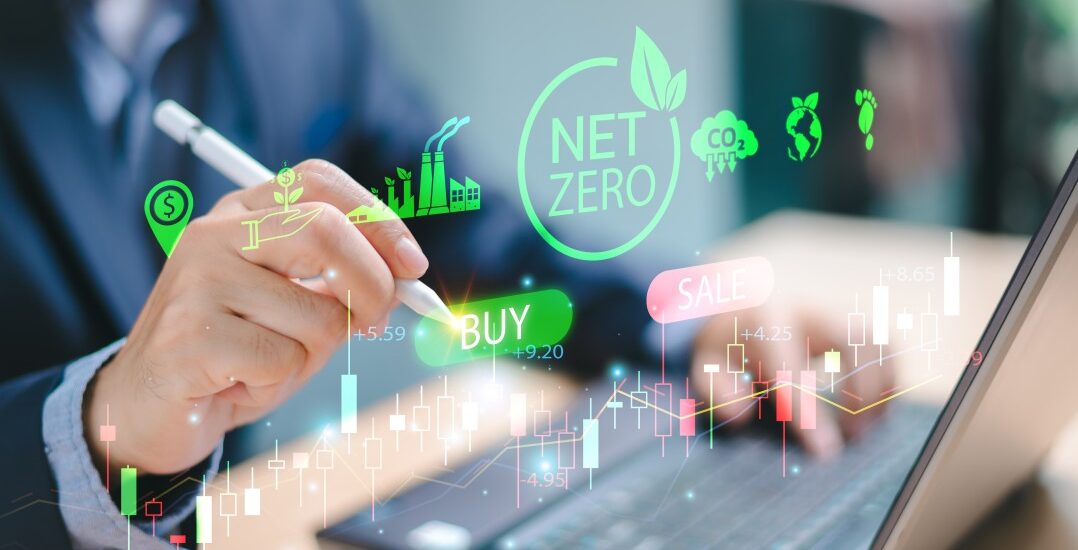- September 3, 2024
- Posted by: Merandi Global
- Categories: Brand Management, Digital Transformation, Strategic Consulting

What is Carbon Trading?
Carbon trading, which is also referred to as emissions trading, forms a key component of the cap and trade approach. The core concept involves setting a limit on overall greenhouse gas emissions and leveraging market dynamics to incentivize cost efficient reductions in emissions.
Key Components of Carbon Trading
- Cap: A regulatory authority establishes a limit on the overall greenhouse gas emissions allowed for all involved parties (such as nations, sectors or businesses). This restriction is typically quantified in terms of carbon dioxide equivalent (CO2e).
- Allowances: Under the cap, emissions allowances are created, each representing the right to emit one ton of CO2e. These allowances are distributed to the participating entities.
- Trading: Entities that reduce their emissions below their allowance can sell their excess allowances to others who need them. This trading creates a financial incentive for emissions reduction.
How Carbon Trading Works
- Setting the Cap: A regulatory authority sets a cap on the total allowable emissions. This cap is typically reduced over time to gradually decrease overall emissions.
- Allocation of Allowances: Allowances can be allocated in different ways:
- Free Allocation: Allowances are given for free, often based on past emissions levels.
- Auctioning: Allowances are sold to the highest bidder, generating revenue for the government.
- Emissions Reduction: Companies have the option to lower their carbon footprint by enhancing energy efficiency, embracing cleaner technologies or transitioning to renewable energy sources.
- Trading Allowances: If a company emits less than its allowance, it can sell the surplus allowances to other companies that are struggling to stay within their limits. This trade occurs in a carbon market.
- Compliance and Penalties: Companies must report their emissions and surrender enough allowances to cover their emissions. If they fail to comply, they face penalties.
Types of Carbon Markets
- Compliance Markets: These are established by mandatory regulations. Examples include the European Union Emission Trading Scheme (EU ETS) and the California Cap-and-Trade Program. Entities must participate to meet regulatory requirements.
- Voluntary Markets: These markets operate outside of regulatory frameworks. Organizations and individuals voluntarily purchase carbon credits to offset their emissions. Standards such as the Verified Carbon Standard (VCS) and the Gold Standard certify these credits.
Benefits of Carbon Trading
- Cost-Effectiveness: Carbon trading allows emissions reductions to occur where they are cheapest, maximizing economic efficiency.
- Environmental Integrity: The cap ensures that the environmental goal of reducing total emissions is achieved.
- Innovation: The financial incentive to reduce emissions encourages companies to invest in new technologies and innovative solutions.
- Revenue Generation: Auctioning allowances can generate significant revenue for governments, which can be reinvested in sustainability projects.
Challenges of Carbon Trading
- Market Volatility: The price of carbon credits can fluctuate, creating uncertainty for businesses planning long-term investments.
- Carbon Leakage: Companies might relocate operations to regions with laxer emission regulations, undermining global reduction efforts.
- Monitoring and Verification: Ensuring accurate emissions reporting and preventing fraud are critical for the system’s integrity.
- Equity Concerns: The impact on different economic sectors and communities can vary, raising issues of fairness and equity.
The Future of Carbon Trading
As the world focuses more on addressing climate change, carbon trading is set to become more significant. International pacts like the Paris Agreement are advocating for greater integration of global carbon markets. Innovations like blockchain technology are being considered to improve transparency and efficiency in these markets.
Trading carbon is a valuable method in combating climate change, utilizing market strategies to effectively reduce emissions. Despite encountering obstacles, its capacity to spur innovation and lower emissions deems it a vital element of the worldwide climate plan. With the pursuit of increasingly ambitious environmental objectives, carbon trading is set to progress and broaden, molding a more sustainable tomorrow.

